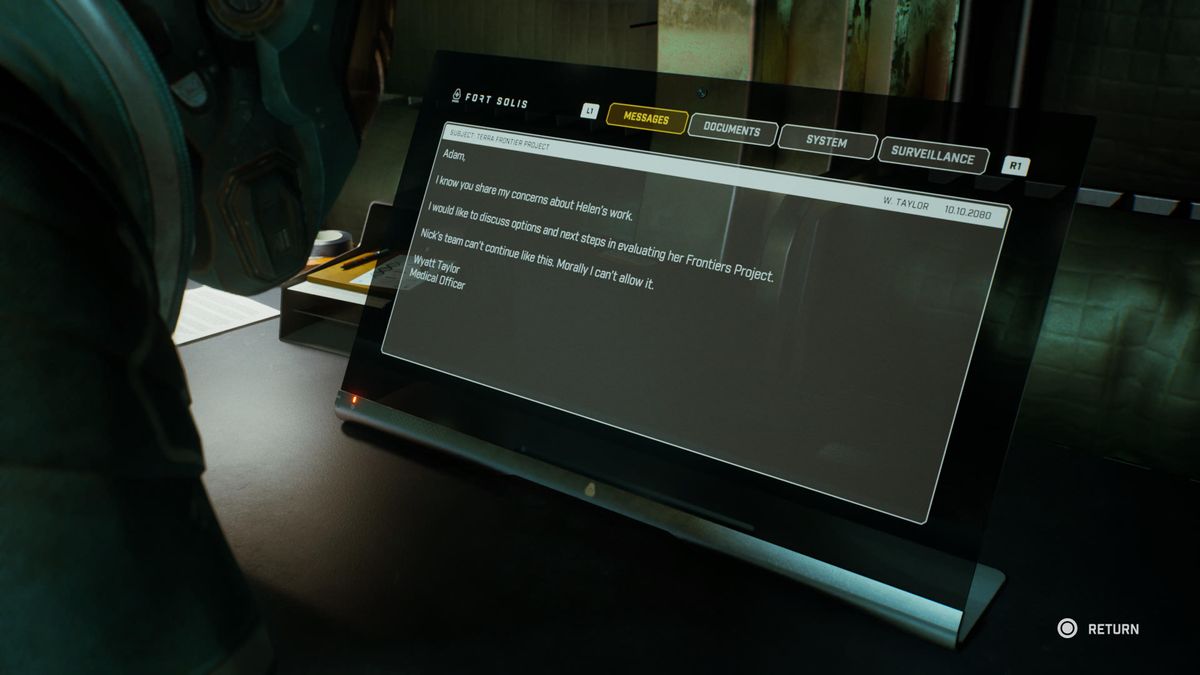Fort Solis review: “Convincing, but not always compelling”
Fort Solis review: "Convincing, but not always compelling"
Fort Solis – An Interstellar Adventure

In Fort Solis, prepare yourself for a journey that will take you to the red planet of Mars. This four-hour narrative adventure, set in a remote mining facility, immerses you in a thought-provoking exploration of interstellar existence and the relentless pursuit of progress, no matter the consequences. But that’s not all! Fort Solis also represents a new direction for the gaming industry, as a small team of just 15 people harness the power of cutting-edge technologies to deliver an experience that defies expectations.
Release date: August 22, 2023 Platform(s): PC, PS5 Developer: In-house Publisher: Fallen Leaf
A Promising Debut
Developer Fallen Leaf makes a confident entrance onto the gaming scene with Fort Solis. The game sets out to deliver a Netflix-style story, draped in the mesmerizing visuals of Unreal Engine 5. The team even enlisted the talents of actors like Roger Clark, Julia Brown, and Troy Baker to bring the characters to life. And while the effort is commendable, the execution sometimes falls short. Fort Solis is undoubtedly an ambitious undertaking, but it lacks the polish and depth that would transform it from a curious experiment into an absolute must-play.
Danger, Danger!
Navigating the desolate halls of the abandoned research facility in Fort Solis proves to be a test of patience. As engineer Jack Leary, your task is to respond to a priority alert beacon amidst an unruly storm that cuts off communication with the outside world. However, the interaction in the game is rather limited. You’ll find yourself pressing buttons, collecting audio logs, and occasionally facing unforgiving quick-time events with razor-thin margins. Fort Solis adopts a third-person perspective, but be warned, it moves at a glacial pace.
When I think about the best adventure games of recent years, titles like What Remains of Edith Finch, Gone Home, Firewatch, and Tacoma come to mind. What sets these games apart is their mastery of the basics. They excel in creating a fantastic sense of movement, with worlds that scale around the player, immersing them in a rich sense of time and place. While Fallen Leaf succeeded in capturing the grand scale of Fort Solis, it falters in the crucial area of navigation. Stepping into Leary’s shoes feels more like taking a leisurely tour, rather than investigating the absence of life. Even in moments of sheer panic, when the game shifts gears from tense to terrifying, all Leary can muster is a wearisome amble. This sluggish movement turns exploration into a frustrating exercise, akin to a gazelle stuck in quicksand.
- Fort Solis review – thrilling sci-fi spooks end with a confus...
- Madden NFL 24 Review – One Yard Forward, Two Yards Back
- Texas Chainsaw Massacre Review
Devil is in the Details

The primary hurdle Fort Solis faces is lacking refinement. By focusing on limited points of interaction within the world, the game’s limitations become more pronounced. It’s hard to ignore the clunky turning circle and stiff camera control when the experience is centered around building momentum. One wonders if this is an attempt to prioritize immersion at all costs or a deliberate decision to force players to slow down and appreciate the eerie landscape shaped by Mars’ violent sandstorms.
This drive for immersion, however, has its downsides. Fort Solis utilizes a diegetic user interface, where maps, text logs, and surveillance tapes are all presented in-universe. It’s a neat concept, but it comes with a flaw – especially for PS5 players sitting further away from the screen compared to those on PC with a monitor. The map becomes almost unusable, as it appears incredibly small on the wrist-based screen. Similarly, reading text-based exchanges requires squinting and straining to discern the words on the page. For a game that relies heavily on found-footage and email exchanges to tell its story, this lack of accessibility proves to be a significant hindrance.
But amidst these flaws, Fort Solis shines as a rare anomaly in an era where game development grows increasingly complex and costly. It presents itself as a succinct four-hour adventure, spread across four interwoven chapters. Not only does it push the boundaries of what can be achieved by a small team, but it also stands as one of the first games built on Unreal Engine 5 outside of Epic Games. Fallen Leaf has delivered an impressive experience, considering the resources at their disposal.
A Glimpse into the Future

Where Fort Solis falls short is in its attention to detail. While the environments are undeniably stunning, they lack depth and volume. Facial animations, while expressive, lack the refinement expected in today’s gaming landscape. Character models lack flair and fluidity, contributing to a lack of overall personality. As you progress through the narrative, this absence becomes increasingly evident. That said, Fort Solis serves as an excellent foundation, ripe for refinement and expansion in future iterations. It may not appeal to all players, with its rough edges demanding a certain level of patience, but those willing to overlook its shortcomings will discover a game brimming with potential.
Disclaimer: Fort Solis was reviewed on PS5, with code provided by the publisher.






